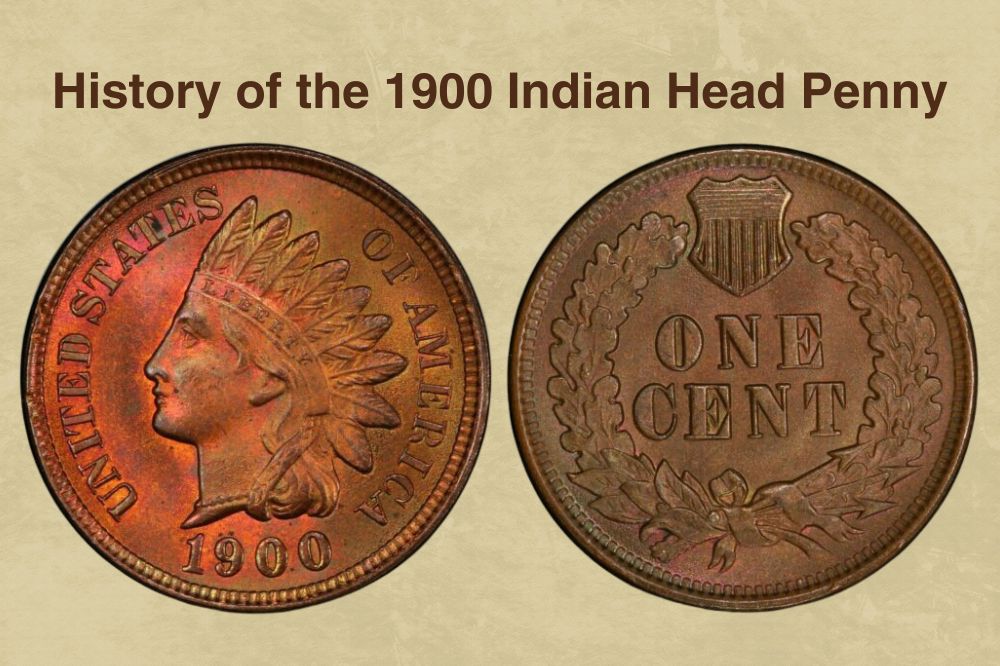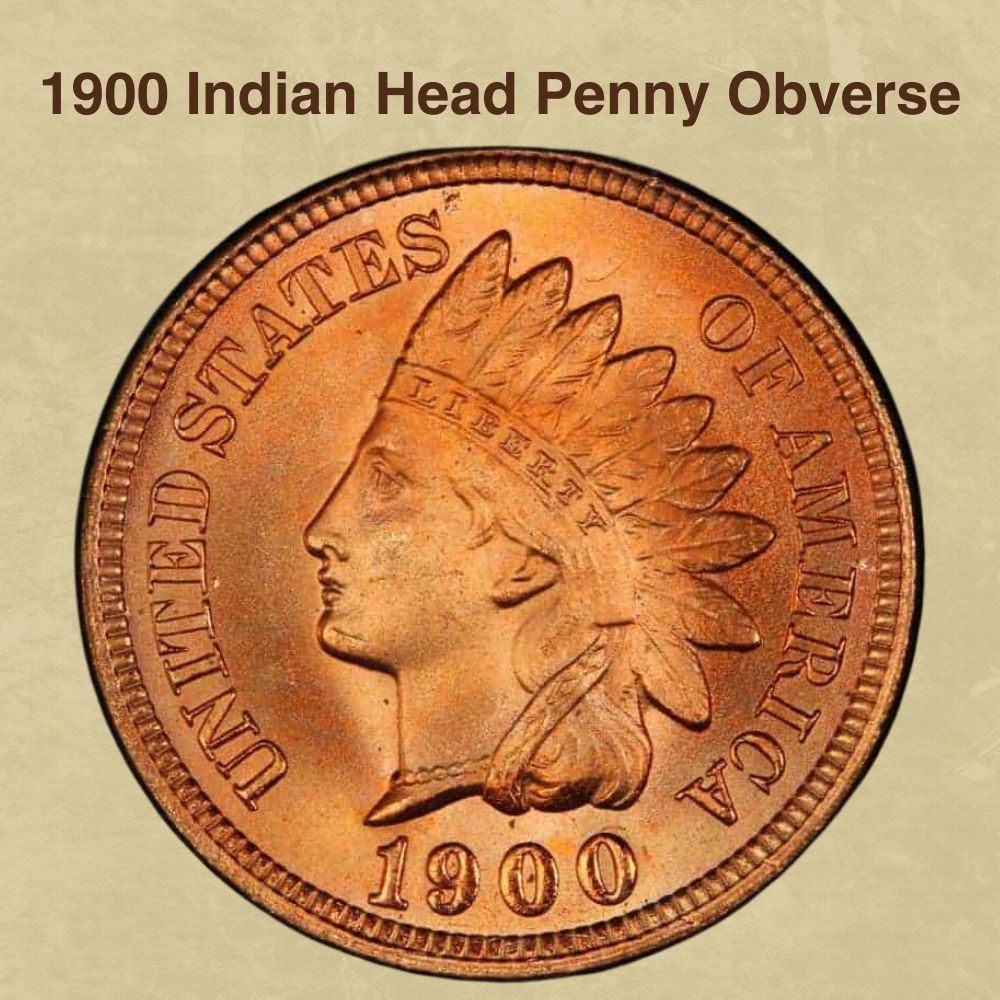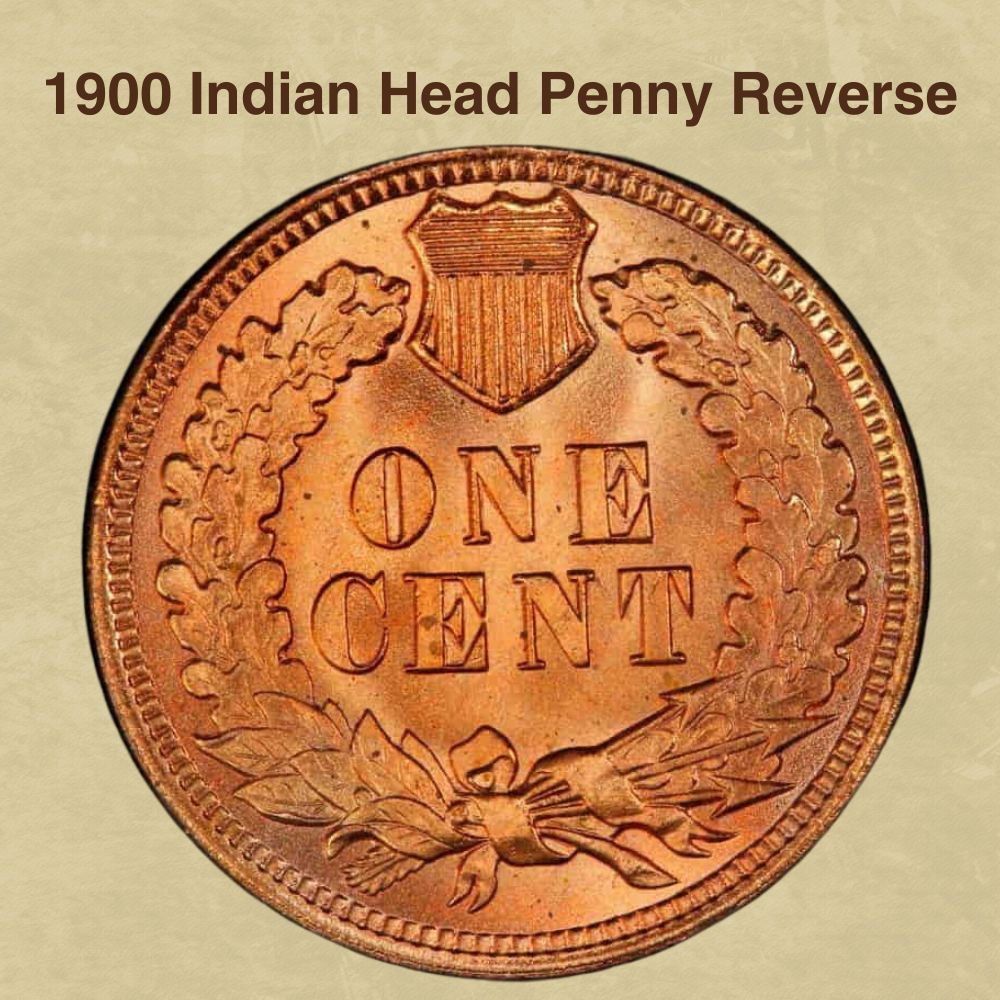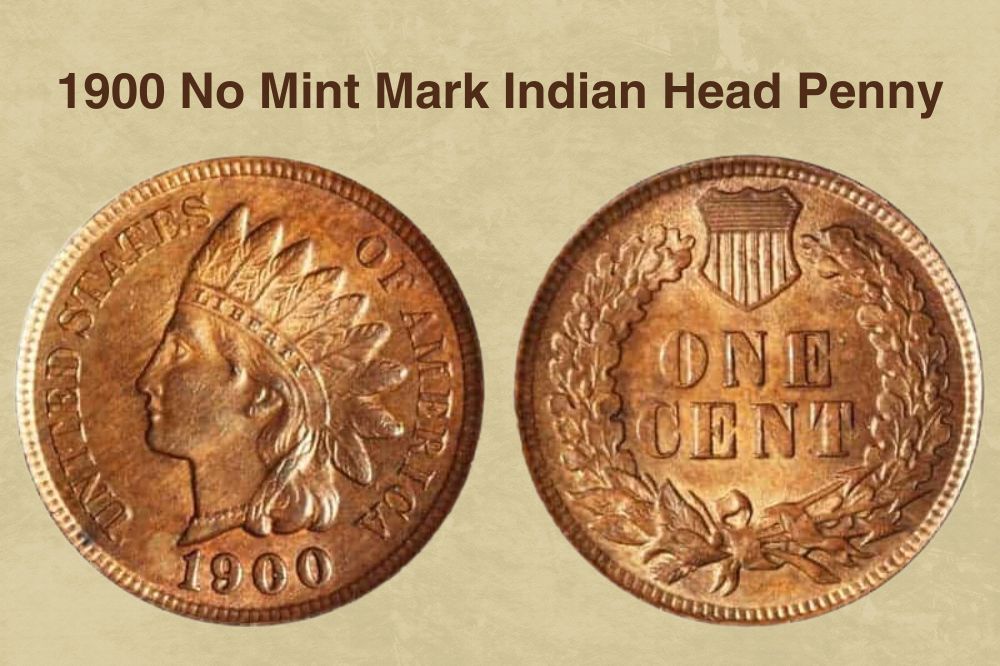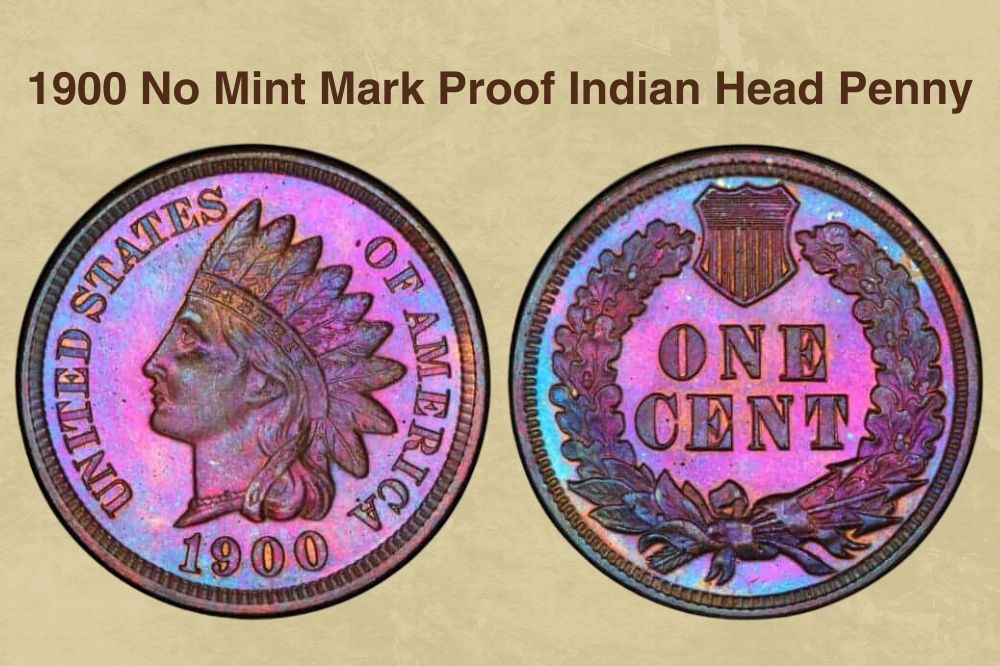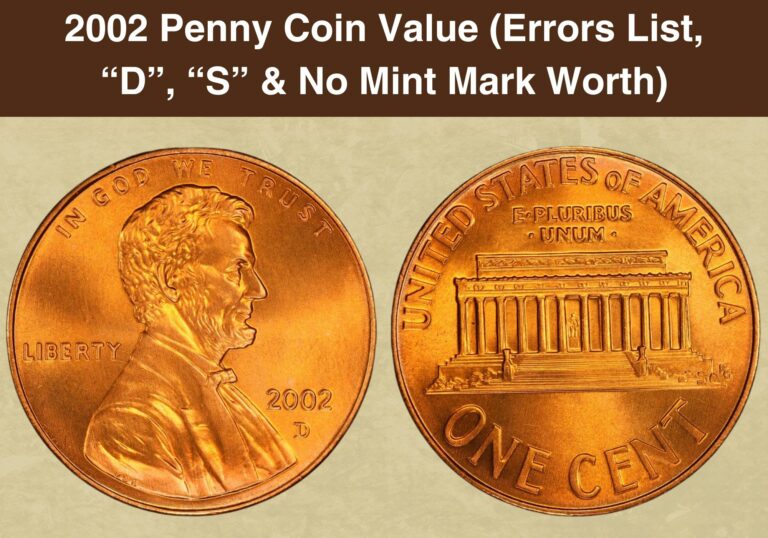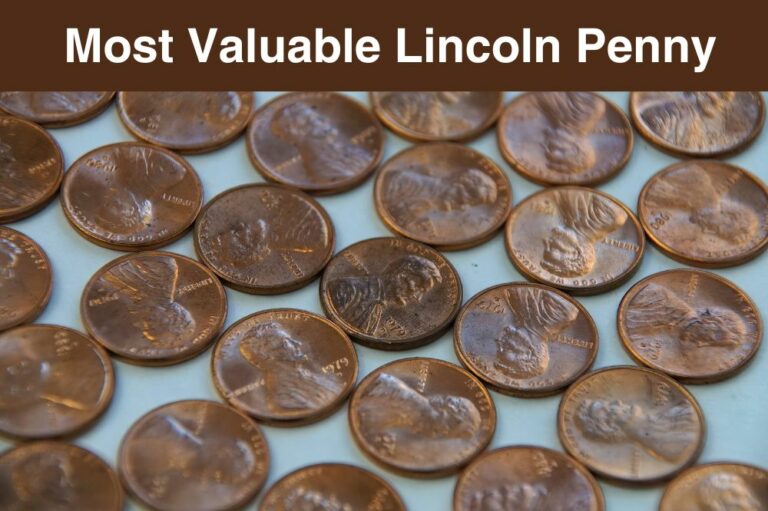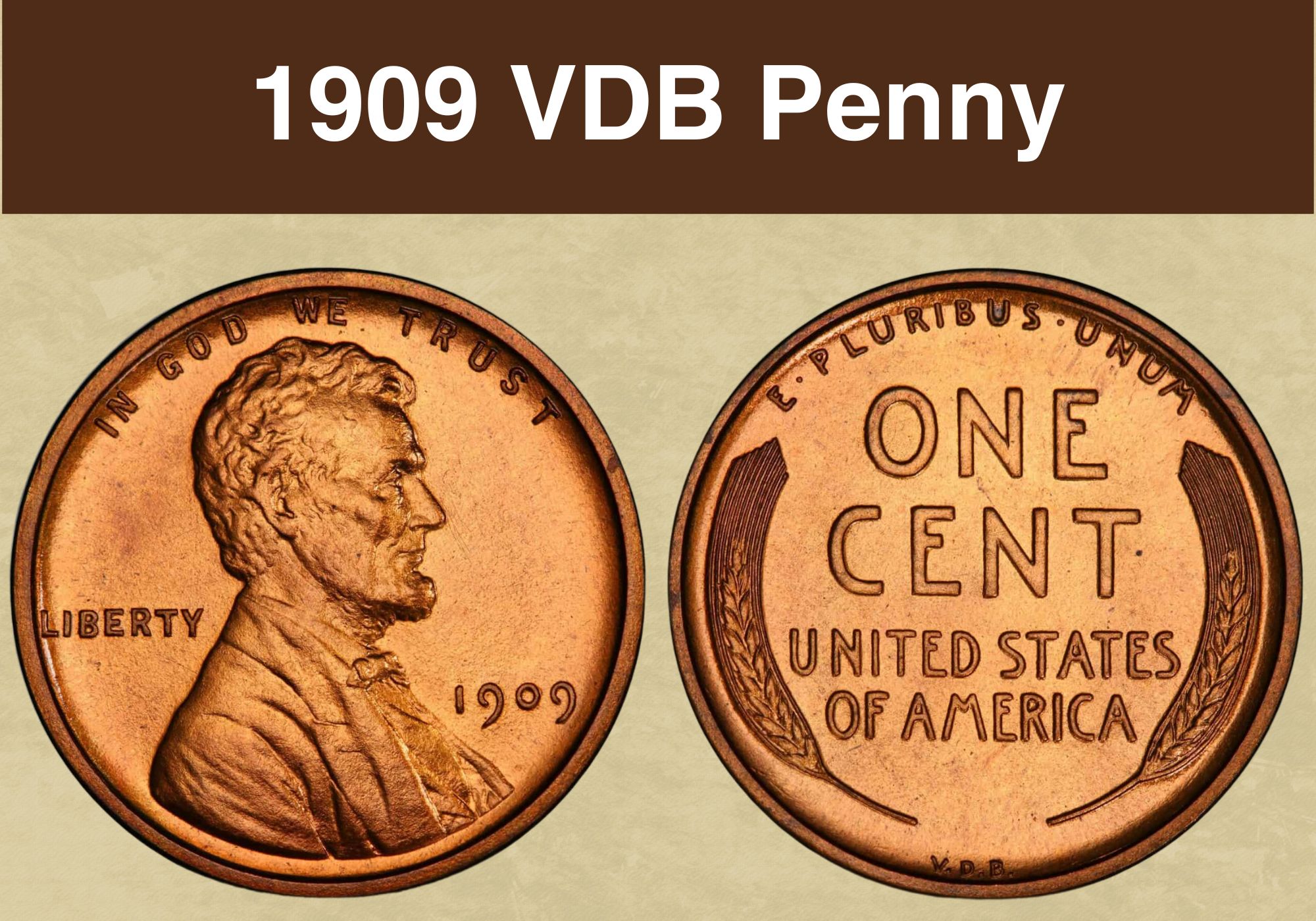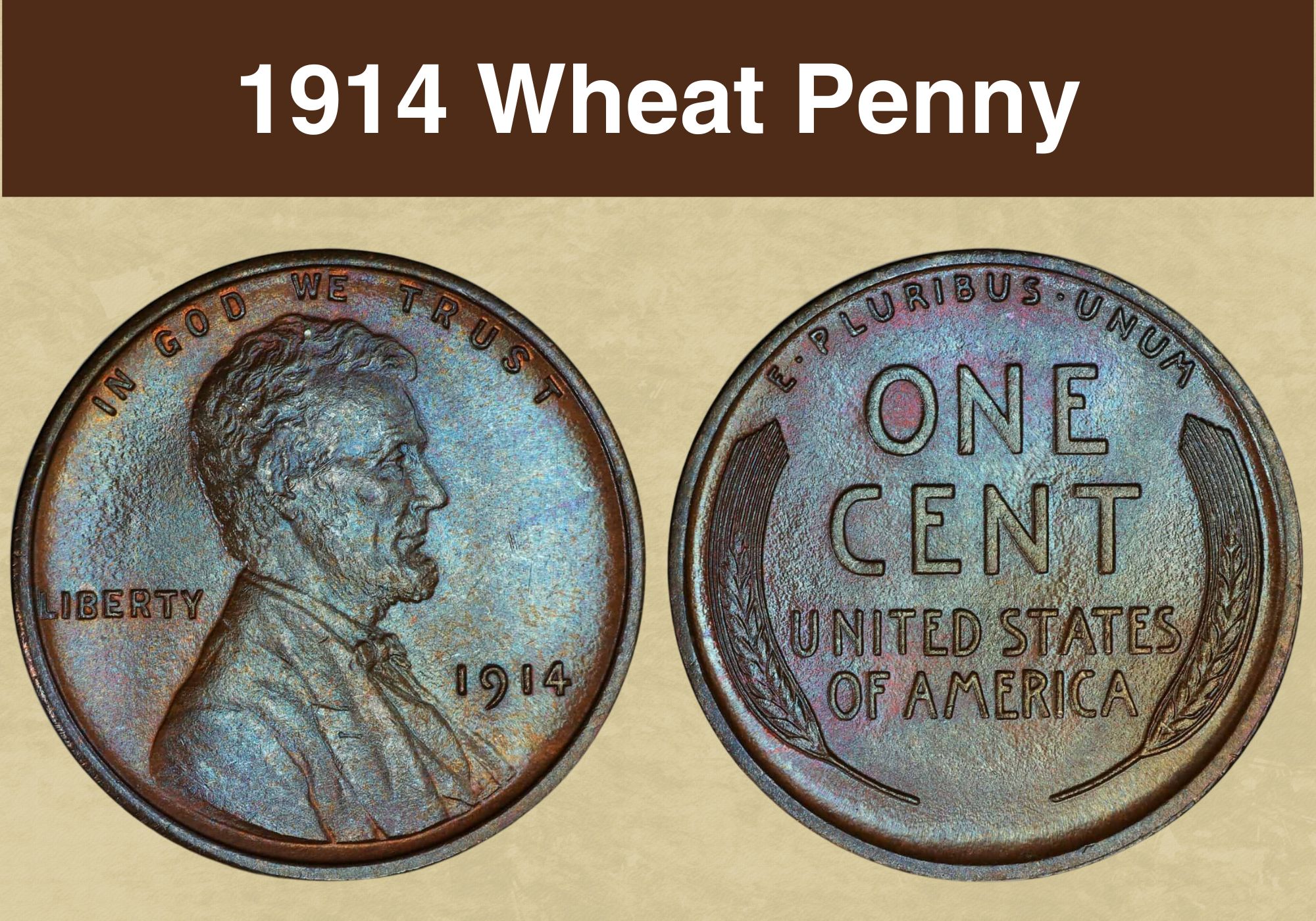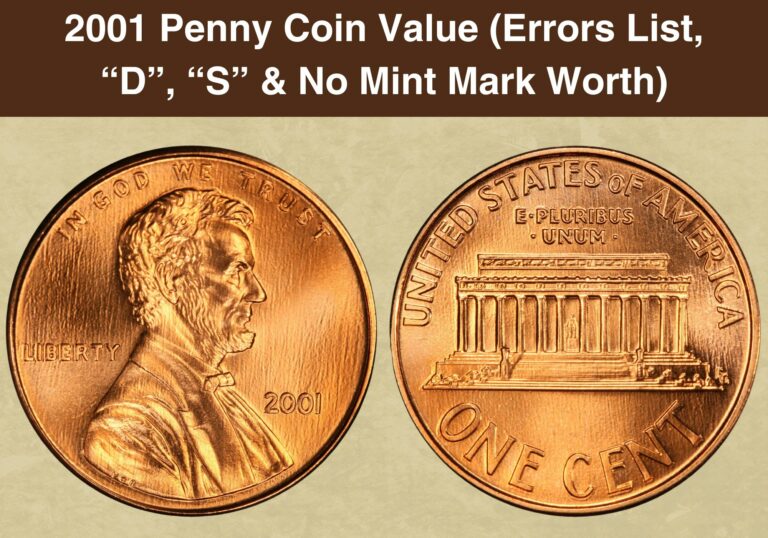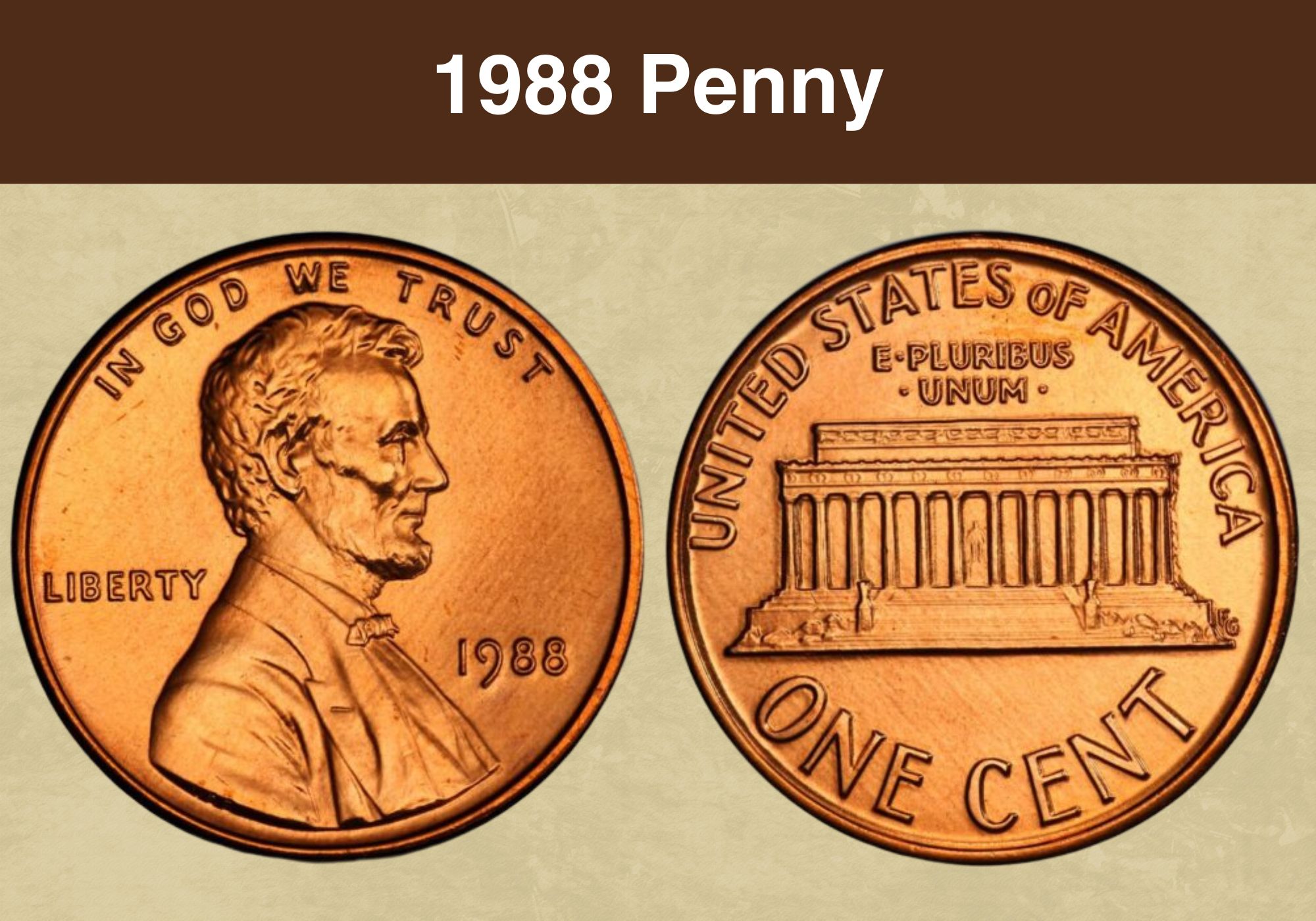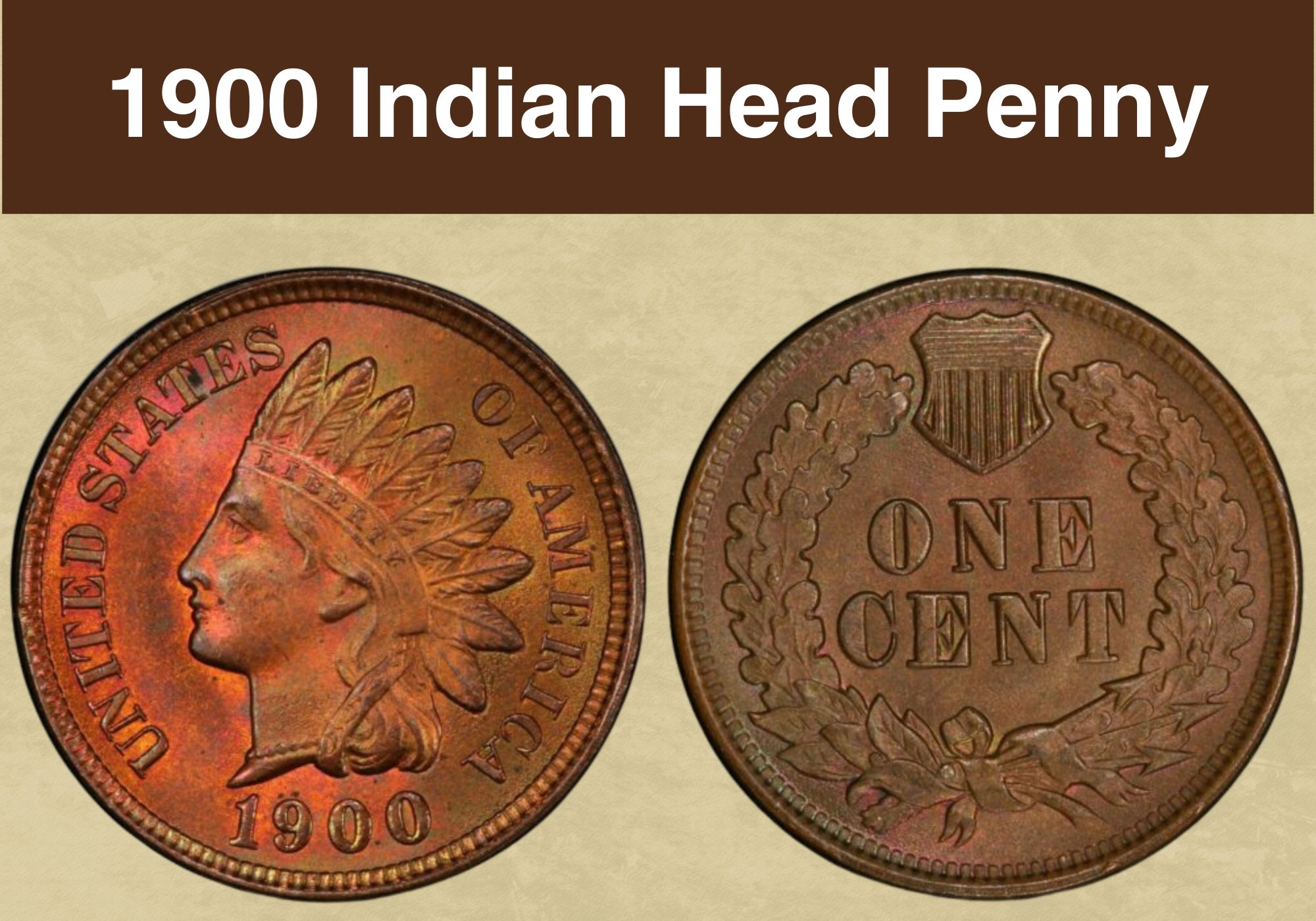
Coin Value Contents Table
- 1900 Indian Head Penny Value Chart
- History of the 1900 Indian Head Penny
- Features of the 1900 Indian Head Penny
- 1910 Penny Grading
- 1900 Indian Head Penny Values Guides
- 1900 No Mint Mark Indian Head Penny Value
- 1900 No Mint Mark Proof Indian Head Penny Value
- Rare 1900 Indian Head Penny Errors List
- Where to Sell Your 1900 Indian Head penny ?
- FAQs
Indian Head pennies have a special place in the hearts of many coin collectors. But are they valuable?
We’re going to look at one specific mintage: the 1900 Indian Head penny value. We’ll investigate its history and design. And we’ll explore the difference that condition makes to how much an individual coin is worth.
If you’re interested in error coins, we’ve got you covered too. We’ll look at some of the interesting mistakes that managed to get past the Mint’s quality control processes.
Ready to learn more? Then let’s get started …
1900 Indian Head Penny Value Chart
|
||||
| Mint Mark and Color | XF45 | MS60 | MS65 | MS67 |
| 1900 (P) No Mint Mark Indian Head Penny, Brown | $22 | $67 | $200 | $1,100 |
| 1900 (P) No Mint Mark Indian Head Penny, Red and Brown | n/a | $70 | $350
|
$1,000+ |
| 1900 (P) No Mint Mark Indian Head Penny, Red | n/a | $75 | $750 | $10,000 |
| PR60 | PR63 | PR65 | PR67 | |
| 1900 (P) No Mint Mark Proof Indian Head Penny, Brown | $150 | $265 | $550 | $2,500 |
| 1900 (P) No Mint Mark Proof Indian Head Penny, Red and Brown | $165 | $300 | $675 | $4,000 |
| 1900 (P) No Mint Mark Proof Indian Head Penny, Red | $190 | $350 | $1,300 | $9,500 |
| 1900 (P) No Mint Mark Proof Indian Head Penny, Cameo | n/a | $750 | $6,250 | $26,500 |
History of the 1900 Indian Head Penny
The Indian Head penny gets its name from the image on the obverse, or “heads” side of the coin. it shows what at first looks to be a Native American in a traditional feathered headdress.
A closer look, however, reveals that the face is actually that of Lady Liberty. And the word “LIBERTY” is inscribed on her headband.
The image was the work of an artist by the name of James Barton Longacre. He was then the Chief Engraver at the Mint, and designed the coins to replace the Flying Eagle penny. The first Indian Head pennies rolled out of the coin presses in 1859.
The dimensions of both the Indian Head penny and its predecessor were smaller than those of earlier cents. The decision to reduce their size was made in response to two factors. One was the rising cost of copper. The other was complaints that the earlier pennies were unwieldy.
The Indian Head penny measured 19 millimeters in diameter, considerably smaller than the 28.6 millimeters of earlier versions. It’s the same size as the modern one-cent piece, but thicker.
By 1900, the composition of the coin had been adjusted too. The first Indian Head pennies had been made of 88 per cent copper and 12 per cent nickel. But in 1864, the recipe changed to 95 per cent copper and 5 per cent tin and zinc.
The new alloy meant the coin was much lighter – 3.11 grams instead of 4.7 grams.
And if you look closely at the reverse of a 1900 penny, you’ll see some minor changes to the design used in the earliest Indian Head pennies. These were made in 1860 and included changing the leaves in the wreath from laurel to oak, adding a shield, and reshaping the cut-off of Liberty’s bust.
Until 1907, the law only allowed cents to be struck at the Philadelphia Mint facility. After that, San Francisco also produced Indian Head pennies with the “S” mint mark. But the series came to an end in 1909, when it was replaced by the Lincoln penny.
Also read: 12 Most Valuable Lincoln Penny Worth Money
Features of the 1900 Indian Head Penny
The Obverse of the 1900 Indian Head Penny
The obverse of the 1900 Indian Head penny is what gives it its nickname. It shows Lady Liberty in profile, wearing the traditional headdress of a Native American warrior.
The combination of a Caucasian woman and masculine Native American headgear raised eyebrows, even at the time. The Mint Director himself, James Ross Snowden, commented on the mismatch.
He nevertheless chose the design over two other options, both variations on the preceding Flying Eagle Penny. It’s likely that the choice was made for pragmatic reasons. The relief of the Indian Head penny design was the lowest of the three, meaning the coins would be easier to strike.
Today, it’s one of the most beloved of all American coins.
Above the image, the country name curves parallel to the coin edge. “UNITED STATES” is inscribed to the left of Liberty’s head, “OF AMERICA” to the right.
The date appears in the same sized lettering at the bottom of the coin.
The Reverse of the 1900 Indian Head Penny
The reverse of the 1900 Indian Head penny shows a wreath of oak leaves. A shield is at the top, and a fletch of arrows at the bottom. The wreath frames the denomination. This is written as “ONE CENT” and inscribed on the horizontal over two lines in the center of the coin.
The earliest Indian Head pennies hadn’t included the shield, and the leaves of the wreath had been laurel instead. The change was made in 1860, at the same time as details on the obverse were changed.
The Mint Director, James Snowden, said the alterations gave the coins “more national character”.
Other Features of the 1900 Indian Head Penny
The 1900 Indian Head penny measures 19 millimeters across and weighs 3.11 grams. It’s both smaller and lighter than pennies made before 1920. And it’s almost the same size as the modern Lincoln penny – just a little thicker.
It has a plain edge. And it’s made of bronze – an alloy of copper, tin and zinc. The copper content means that the color of an individual coin will vary, depending on how much it’s been handled or exposed to the air.
A coin with minimal handling or exposure to oxygen will remain the red shade of new copper. A coin that’s had more use will be brown.
Both color and condition are key to the value of any Indian Head penny. You can find out more about how to grade Indian Head pennies in this YouTube video from Coin Study.
Also read: 13 Most Valuable Wheat Penny Worth Money
1910 Penny Grading
| # | Grade |
|---|---|
| 1 | Basal State-1 |
| 2 | Fair |
| 3 | Very Fair |
| 4, 5, 6 | Good |
| 7, 8, 10 | Very Good |
| 12, 15 | Fine |
| 20, 30 | Very Fine |
| 40 | Extremely Fine |
| 50 | About Uncirculated |
| 60 | Mint State |
| 65 | Mint State |
| 70 | Mint State |
Please check our grading guides to know your coin scale, It’s the necessary step to know the exact value of your coin.
Check out now: How to Grade Indian Head Penny?
1900 Indian Head Penny Values Guides
1900 No Mint Mark Indian Head Penny Value
In 1900, the Philadelphia Mint facility was the only one legally permitted to strike pennies. So both business strike and proof coins came from here. And none of them have a mint mark.
Almost 67 million business strike 1900 pennies were produced – that is, coins that were intended for circulation. Today, it’s estimated that around 4,000 brown coins survive. Numbers are lower still for red and brown coins, with an estimated 800 survivors. And for red coins, the estimate is 1,000.
Brown 1900 pennies in the poorest condition are worth between $1 and $3, depending on their grade.
There’s a slight premium for coins that have survived whilst being in the poorest condition. Examples graded 1 are valued by the PCG at $2.
From there, prices rise as condition improves. A brown coin graded XF45 (the letters stand for “extremely fine”) is worth around $22. That rises to $67 at MS60, and $200 for a gem quality MS65 example.
The highest anticipated grade for a brown 1900 penny is MS67. A coin in that condition would be worth an impressive $1,100.
Red and brown coins carry a premium over brown examples. That premium is fairly minor in cash terms at lower grades, but becomes more significant further up the quality scale.
A red and brown penny graded MS65 is valued by the PCGS at $350. That’s $150 more than the brown equivalent.
And most desirable of all are red pennies. They range in value from $75 at MS60 to $750 at MS65, and $10,000 at MS67.
The finest examples of all are three coins that have been certified by the PCGS at MS67+. Those are valued at a cool $28,500 apiece.
1900 No Mint Mark Proof Indian Head Penny Value
The proof pennies struck at Philadelphia in 1900 numbered just 2,262 coins. They were prepared using hand-selected planchets and specially prepared dies. They were destined for coin archives and for collectors.
The low numbers have become still lower over time. And that means that any 1900 proof penny is a collectible coin.
They’re divided into four categories: the three standard colors, plus cameos. Cameo designation is awarded to proof coins that have an attractive contrast between mirror-like fields and frosting on the raised parts of the design.
Because proofs weren’t intended for circulation, the lowest grade is generally PR60. A brown 1900 proof penny at that grade is worth around $150. That rises to $550 at PR65, and $2,500 at PR67.
For red and brown proofs, values start at $165 at PR60, and peak at $5,500 at PR67+.
And for red proofs, the range is from $190 at PR60, to $15,000 for the sole coin graded PR67+ by the PCGS. Rival grading agency the NGC has graded one example at PR68. That last sold at auction in 2017, when it achieved a price of $7,800.
The most desirable 1900 proof pennies are cameos. The lowest grade for one of those is PR62, and a coin at that grade is worth around $400. Values enter four figures ($2,000) at MS64.
And the finest known examples are three coins graded PR67. Those are valued by the PCGS at $26,500 apiece.
Also read: 17 Most Valuable Indian Head Penny Worth Money
Rare 1900 Indian Head Penny Errors List
1900 (P) No Mint Mark Indian Head Penny, Repunched Date
Three different varieties of business strike 1900 pennies exist with a repunched date.
With the first, the repunching is very subtle. Look for a single line curving to the north-east of the final “0”. That’s the top of the original digit.
With the second variety, the repunching is visible on the top of the “1”, the middle of the “9”, and the top of the second “0”. It’s very hard to spot with the naked eye, though – use a microscope or loupe to find it.
The third variety is certified only by the NGC, but is perhaps the clearest of all. You can see the original “9” to the left and bottom of the final one. And the lower part of the original first “0” is visible at the bottom of that digit.
Values for all varieties depend on the condition of the coin. There’s not yet much pricing history for the third variety. But for either of the first two, a coin graded VF20 is worth about $45, at AU58 about $100, and a red and brown coin graded MS65 is worth around $450.
You can take a look at all three varieties in detail in this YouTube video from Treasure Town.
1900 (P) No Mint Mark Indian Head Penny, Obverse Lamination
Lamination errors occur because of a problem with the composition of the planchet. Pieces of the surface peel away, removing elements of the design.
This type of error can be difficult to distinguish from later damage. So look for an example that’s been certified by a reputable coin grading agency before paying a premium.
One of the pennies struck in 1900 had this kind of error. It was a brown coin, and the lamination was fairly subtle. It was authenticated and graded by ANACS as EF45 (“extremely fine”). And at the time of writing, it was being offered for sale on auction site eBay for $44.
Also read: 11 Most Valuable Wheat Penny Errors
Where to Sell Your 1900 Indian Head penny ?
Now that you know the value of your coins, do you know where to sell those coins online easily? Don’t worry, I’ve compiled a list of these sites, including their introduction, pros, and cons.
Check out now: Best Places To Sell Coins Online (Pros & Cons)
FAQs
What makes a 1900 Indian Head penny valuable?
Proof pennies in any condition are worth good money, simply because so few of them were produced. And cameos – proofs that have shiny fields and frosted devices – are the most valuable of all. The best examples are worth well over $20,000.
For business strike pennies, color and condition are key to value. A brown penny in poor condition could be worth only around a dollar. But the finest red pennies to have been certified to date are worth $7,000 a pop.
A coin with a Mint error will command a premium too. How much that is depends on how rare and dramatic the error is.
What year is the rarest Indian Head penny?
The auction record for an Indian Head penny was set in 2011 for a proof penny dated 1864.
This was the first year the Indian Head penny was produced in bronze. And towards the end of the year, the portrait was sharpened and the letter “L” (for the designer, Longacre) added behind the neck.
Business strike coins with the “L” are sought after too – but proofs are extremely rare. Only around 20 are believed to have been struck.
And it was one of those that was offered at auction in 2011. It was graded PR65 red and brown, tied with two other coins in second place for condition. It realized the sum of $161,000.

